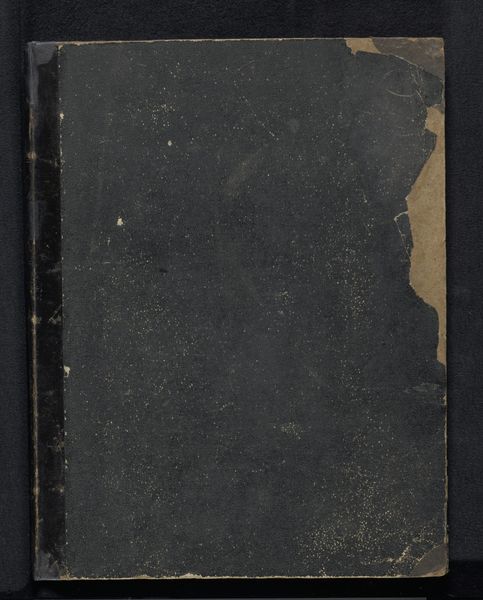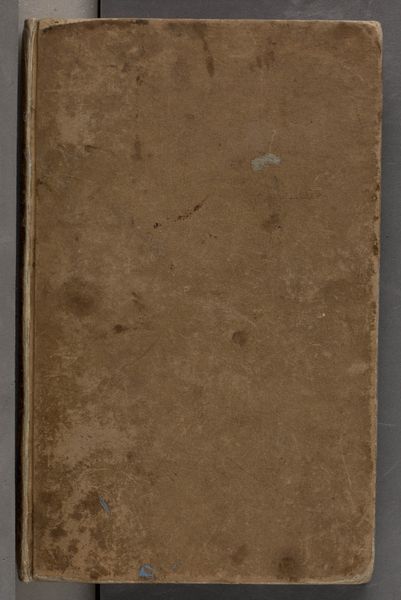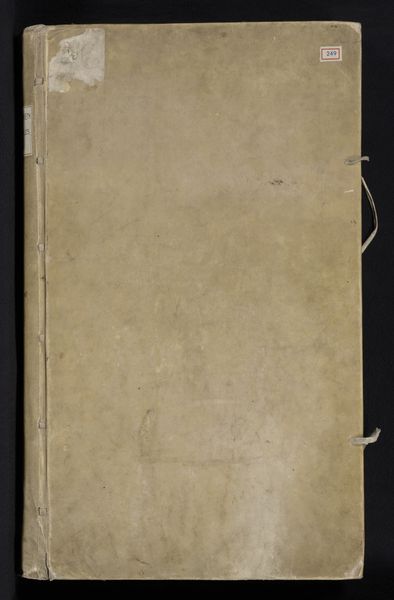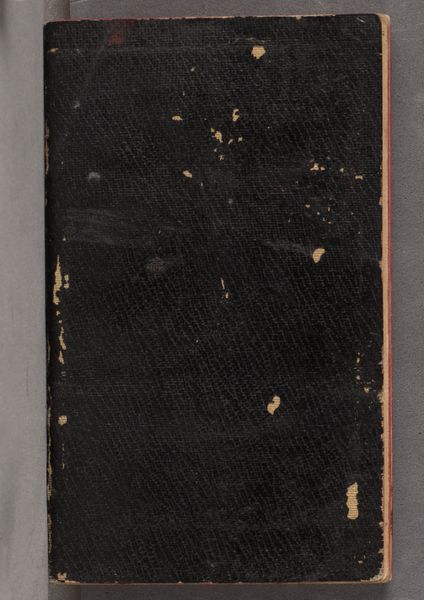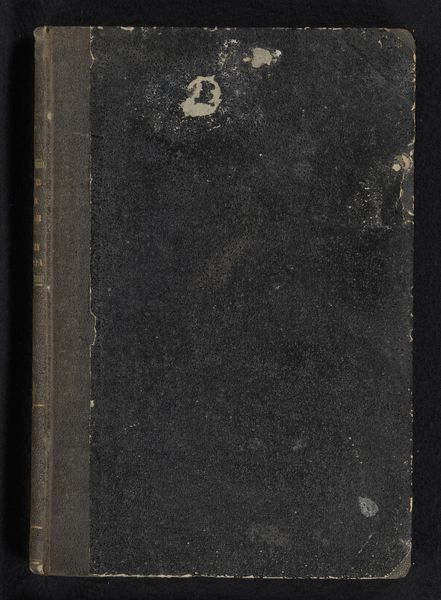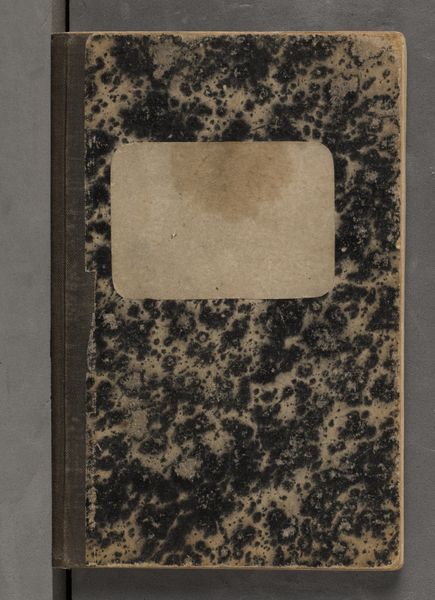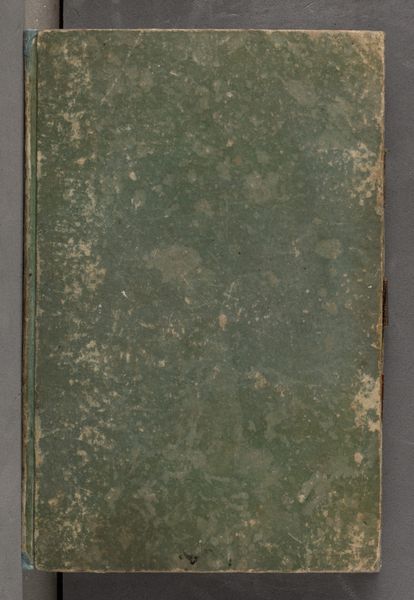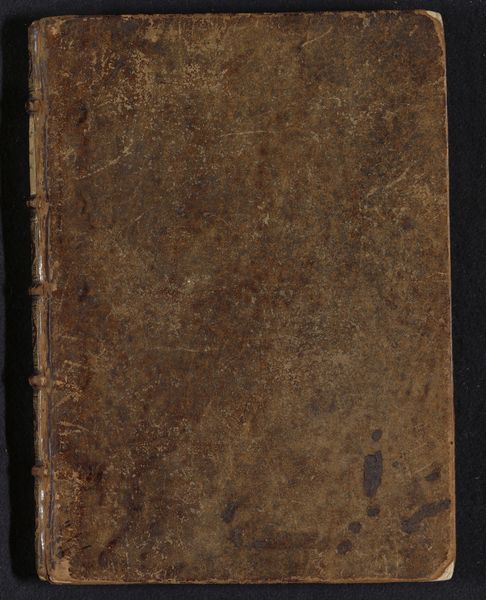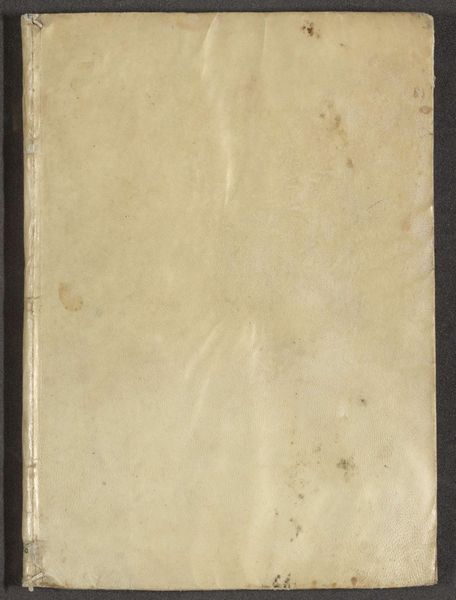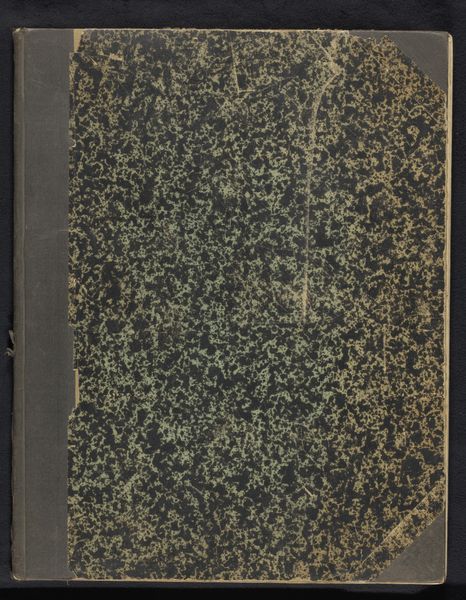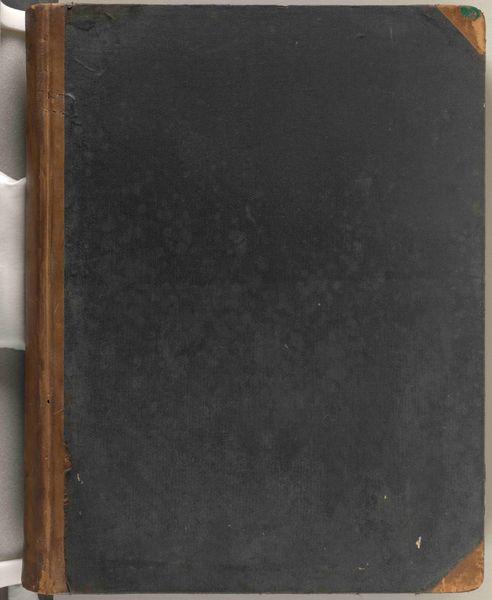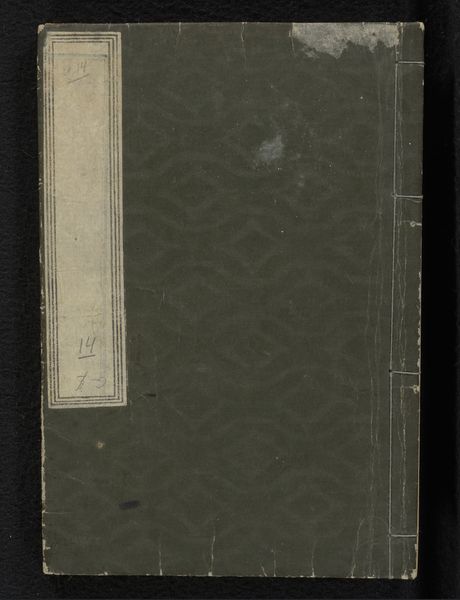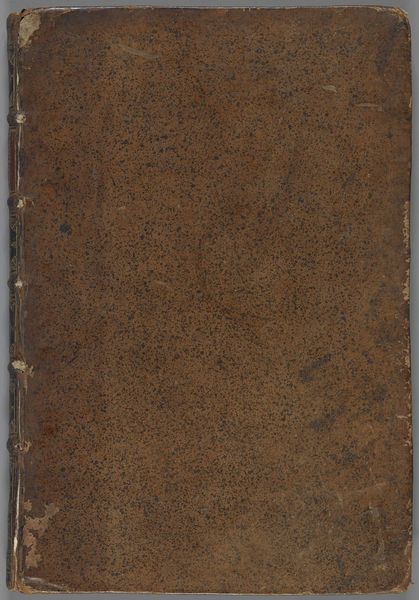
Copyright: Public Domain
This is Philipp Röth's "Skizzenbuch," an undated sketchbook residing in the Städel Museum. The sketchbook presents itself as a study in contrasts. Its somber, dark cover is disrupted by a stark, light label. A seemingly distressed surface, marked by cracks and wear, hints at the passage of time and the history of its use. The form of the sketchbook is crucial. It represents not a finished artwork but a repository of potential. It is in this space of possibility that the true meaning of the object lies. The texture of the cover, with its apparent imperfections and irregularities, challenges the traditional notion of art as pristine and flawless. Instead, it embraces the beauty of the imperfect, the value of the everyday. Consider the interplay of light and shadow on the cover's surface. This visual tension creates a sense of depth and complexity, inviting us to contemplate the unseen contents within. The sketchbook serves as a reminder that art is not just about the final product but also about the process, the journey, and the accumulation of ideas.
Comments
stadelmuseum about 2 years ago
⋮
From July to August 1862, Philipp Röth travelled from Freiburg to Bernau in the Black Forest. He followed Hans Thoma, his friend since their studies in Karlsruhe and to whom he later dedicated his sketchbook full of drawings. He captured the artist friend himself on sheet 25 recto and shows him bent over a sketchbook in concentration. Thoma, who was born in Bernau, probably accompanied Röth on his hikes through the Black Forest and especially in the area around his hometown. This also explains the almost identical view of the landscape that Röth and Thoma captured at the sawmill near Bernau (see here sheet 10r and Inv. SG 2111, sheet 45v). The male figures depicted on sheet 8 verso and sheet 26 recto could also be read as indications of Thoma’s company. – Röth usually drew mountainous and forest landscapes with a pencil, often turning the booklet 90 degrees to the right, and delimiting individual compositions that do not fill the entire sheet with framing lines. A later realisation in oil may already have been envisaged for these landscapes. Röth was especially interested in untouched nature with its streams, tall fir trees, rock formations and mountain landscapes; less often, he sketched the (regional) architecture, while figures remain mostly staffage.The sketchbook is accompanied by a single drawing showing the Röth’s house in Bernau, which he gave to his sister Agathe Thoma as a gift.For a full sketchbook description, please see “Research”.
Join the conversation
Join millions of artists and users on Artera today and experience the ultimate creative platform.
